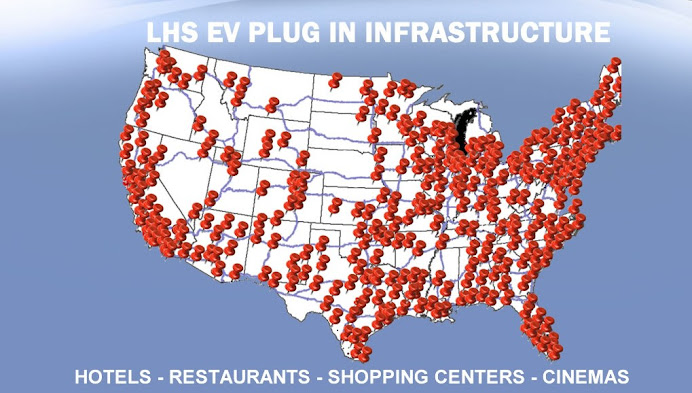.jpg) The Ontario government has set its sights on landing a Volkswagen AG engine or transmission plant as a way of tapping tens of billions of dollars that global auto makers will invest during the next five years to meet stringent new North American fuel economy rules.
The Ontario government has set its sights on landing a Volkswagen AG engine or transmission plant as a way of tapping tens of billions of dollars that global auto makers will invest during the next five years to meet stringent new North American fuel economy rules.Volkswagen is about one year away from starting production at an assembly plant it is building in Chattanooga, Tenn., but is expected to add new engine and transmission facilities later to supply the 150,000 vehicles that will be made there annually.
“We knew if we didn't land the [assembly] plant, that's our next goal,” Ontario Economic Development Minister Sandra Pupatello said in an interview. The process is still in its early stages, and it is not known exactly how far the government is prepared to go to lure an engine or transmission factory to the province. If government incentives are the only factor for auto makers studying such huge investments, Ms. Pupatello acknowledged, Ontario will lose out to U.S. states. Instead of money, the province will showcase its skilled work force and expertise in innovation, she said.
Volkswagen faces the same expensive and formidable problem as its rivals in North America – making sure their vehicles are about 25% more fuel efficient by 2016 than the cars now on the road. That will require vast amounts of research and spending to refine internal combustion engines. The research will also involve the development of hybrid and plug-in hybrid engines and improving transmissions so they contribute to higher fuel economy.
A greener automotive future represents a potential bonanza of investment and jobs for Ontario and other auto-making jurisdictions battered by the auto crisis that sent Chrysler LLC and General Motors Corp. into Chapter 11 bankruptcy protection and tens of thousands of workers to the unemployment lines. In the battle for that investment, however, Ontario is at a disadvantage. The province is vying against the U.S. government, which has established a $25-billion (U.S.) fund to assist auto makers in developing new technologies that will improve fuel economy and reduce emissions.
“It just kills me every time I hear about it,” Ms. Pupatello said. “Everywhere I go around the world, everybody knows about the American fund.”
The U.S. Environmental Protection Agency has said auto makers will spend at least $52-billion to meet the requirements outlined earlier this month by the Canadian and U.S. governments. “I think it's going to be considerably higher than that,” said David Cole, chairman of the Center for Automotive Research, an industry think tank in Ann Arbor, Mich. “The magnitude of the investment is huge.” Ontario can't match the deep pockets of the U.S. government and individual states. The province made a pitch to Volkswagen for the Chattanooga assembly plant, but couldn't come close to matching the $577-million in taxpayer money Tennessee threw on the table.
So tapping into the green revolution will require a new strategy for the heartland of Canadian auto production, which for decades has relied mainly on winning new assembly plant investments to create and maintain jobs in the sector. New assembly plant investment is expected to be scaled back during the rest of this decade from the heady days of the 1990s and 2000s, when Japan-based auto makers ratcheted up production dramatically in North America. “There does need to be a concerted approach that says, ‘We're going pick certain areas such as powertrain” and lighter weight components, said Steve Rodgers, president of the Automotive Parts Manufacturers Association of Canada.
Ms. Pupatello said she has discussed electric vehicles and other advances in technology with every auto maker she has met with in recent years and has made sure government incentives to Canadian parts makers go to those working on ways to reduce greenhouse gases and produce lighter components.
The Tennessee plant marks Volkswagen's return to vehicle assembly in the United States after an absence of several decades and is a centrepiece of its strategy to sell 800,000 vehicles there annually by 2018. That in turn, is part of its ambitious plan to become the world's largest auto maker by that year. Volkswagen has an engine plant in Mexico that supplies its massive operations in Puebla, where it makes the Beetle and other cars. But Volkswagen of America president Stefan Jacoby told an industry conference in 2008 that the Tennessee plant will require new engine and transmission plants to be competitive. He told industry publication Automotive News last year that 80% of the content in the vehicles coming out of Tennessee will be North American. The components that contribute the most to that figure are the engines and the transmissions.
A spokesman for Volkswagen of America said Chattanooga is working with Puebla on sourcing for components, but no final decisions have been made and the focus at the moment is getting the Tennessee plant into production.
Source: The Globe and Mail, by Greg Keenan, April 16th, 2010
Source: The Globe and Mail, by Greg Keenan, April 16th, 2010

Aucun commentaire:
Enregistrer un commentaire